
Placodermi is a class of armoured prehistoric fish, known from fossils, which lived from the Silurian to the end of the Devonian period. Their head and thorax were covered by articulated armoured plates and the rest of the body was scaled or naked, depending on the species. Placoderms were among the first jawed fish; their jaws likely evolved from the first of their gill arches.

Dunkleosteus is an extinct genus of large arthrodire ("jointed-neck") fish that existed during the Late Devonian period, about 382–358 million years ago. It was a pelagic fish inhabiting open waters, and one of the first apex predators of any ecosystem.
Heintzichthys is an extinct monospecific genus of arthrodire placoderm that lived what is now Europe and North America during the Famennian stage of the Late Devonian period. The type specimen was discovered in the Cleveland Shale near Cleveland, Ohio, in the United States.

Holdenius is an extinct genus of arthrodire placoderm fish which lived during the Late Devonian period.

Selenosteidae is an extinct family of small to large-sized arthrodire placoderms from the Late Devonian. With the exception of the Chinese Phymosteus, selenosteids lived in shallow seas in what is now Eastern North America, Eastern Europe, and Northeastern Africa.

Selenosteus brevis is an extinct large selenosteid arthrodire placoderm known from the Famennian Cleveland Shale of Ohio. Scrappy remains from the Frasnian Rhinestreet Shales of Erie County, New York, were attributed by Hussakof and Bryant to this genus in 1919, but, this identification is doubtful. A second species, S. kepleri, was described in 1901, but, not enough differences can be seen between its specimens, and those of the type species to warrant new species status.

Stenosteus is an extinct monospecific genus of medium-sized selenosteid arthrodire placoderms of the Late Devonian period known from the Upper Famennian Cleveland Shale of Ohio. Estimated skull lengths range from 6 to 9 centimeters Most fossils of Stenosteus have been scraps of armor and portions of tooth-plates suggestive of Selenosteus. In 1996, enough material of a new species, S. angustopectus, was recovered to allow a reconstruction of armor that resembles that of Selenosteus.
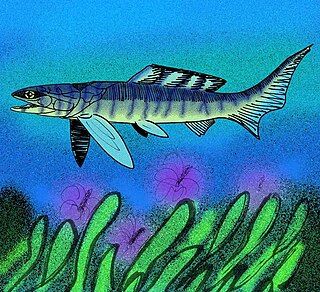
Gymnotrachelus is an extinct monospecific genus of large selenosteid arthrodire placoderm of the Late Devonian known from the Late Famennian Cleveland Shale of Ohio. The type species Gymnotrachelus hydei was originally reconstructed as physically resembling Selenosteus, with slightly smaller orbits. Later specimens led to a reappraisal, and now G. hydei is thought to have a more gar-like or barracuda-like build.

Microsteus is an extinct genus of small selenosteid arthrodire placoderms known from the Upper Frasnian Kellwasserkalk facies of Late Devonian Germany.
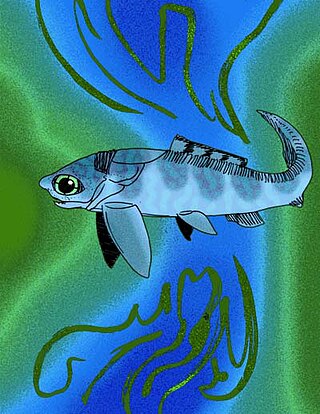
Enseosteus is an extinct genus of small selenosteid arthrodire placoderms known from the Upper Frasnian Kellwasserkalk facies of Late Devonian Germany and Morocco.
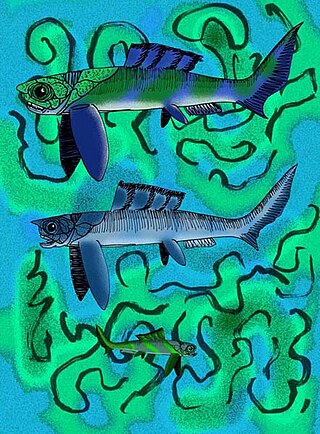
Rhinosteus is an extinct genus of small to medium selenosteid arthrodire placoderms of the Late Devonian known from the Upper Frasnian Kellwasserkalk facies of Bad Wildungen, Germany and Morocco.

Melanomontanosteus is an extinct genus of selenosteid placoderm that lived during the Late Devonian. It contains one valid species, M. occitanus, known from fossils found in Southern France.
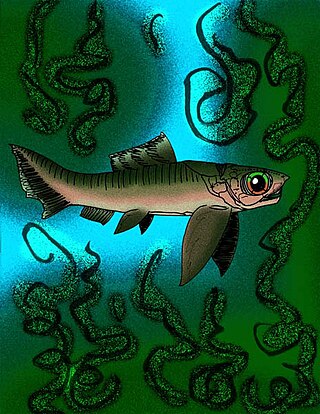
Braunosteus schmidti is a medium-sized selenosteid arthrodire placoderm known from the Upper Frasnian Kellwasserkalk facies of Late Devonian Bad Wildungen, Germany. B. schmidti has a broad skull about 9 centimeters long, and a short, but pointed rostrum. Its appearance is very similar to that of the basal selenosteid Pachyosteus.

Pachyosteus is an extinct monospecific genus of medium-sized selenosteid arthrodire placoderm known from the Upper Frasnian Kellwasserkalk facies of Late Devonian Bad Wildungen, Germany and from the Famennian portions of the Holy Cross Mountains of Poland. The type species Pachyosteus bulla has a broad skull about 7 to 10 centimetres long, a comparatively long median dorsal plate, and a short rostral plate that meets the pineal plate.
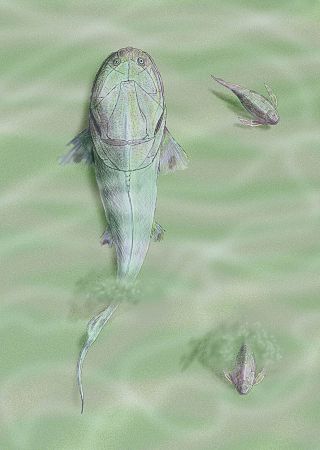
Homostiidae is a family of flattened arthrodire placoderms from the Early to Middle Devonian. Fossils appear in various strata in Europe, Russia, Morocco, Australia, Canada and Greenland.
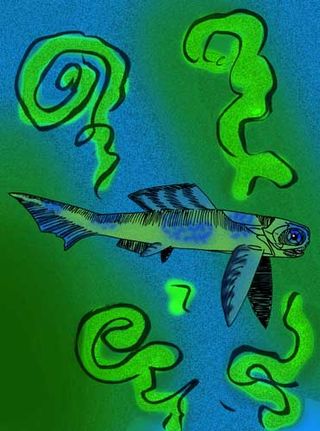
Walterosteus is an extinct genus of small selenosteid arthrodire placoderms known from the Upper Frasnian Kellwasserkalk facies of Late Devonian Germany and Morocco.

Oxyosteus is a genus of trout-sized, highly compressed arthrodire placoderms from the Late Devonian of Europe: The two described species are restricted to the Late Frasnian-aged Kellwasserkalk Fauna of Bad Wildungen, while a median dorsal plate of an unnamed species is known from the Middle Frasnian Holy Cross Mountains of Poland.

Romundina is a small, heavily armored extinct genus of acanthothoracid placoderms which lived in shallow marine environments in the early Devonian (Lochkovian). The name Romundina honors Canadian geologist and paleontologist Dr. Rómundur (Raymond) Thorsteinsson of Calgary, Alberta, Canada. Romundina are believed to have lived on Earth between 400 and 419 million years ago. The closest known relative to Romundina is the acanthothoracid Radotina. The type and only described species is R. stellina.
Phymosteus liui is an extinct large selenosteid arthrodire placoderm known from the Lower Famennian Xiejingshi Formation of Shimen County, Hunan province, in central China.

Qilinyu is a genus of early placoderm from the late Silurian of China. It contains a single species, Qilinyu rostrata, from the Xiaoxiang fauna of the Kuanti Formation. Along with its contemporary Entelognathus, Qilinyu is an unusual placoderm showing some traits more similar to bony fish, such as dermal jaw bones and lobe-like fins. It can be characterized by adaptations for a benthic lifestyle, with the mouth and nostrils on the underside of the head, similar to the unrelated antiarch placoderms. The shape of the skull has been described as "dolphin-like", with a domed cranium and a short projecting rostrum.


























